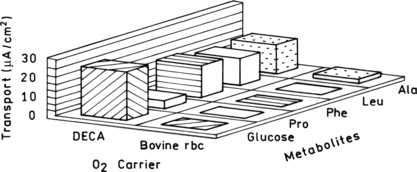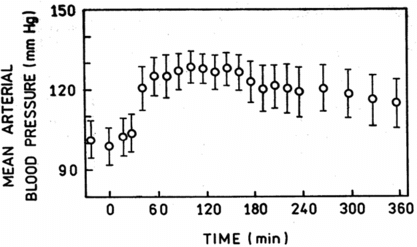Figures & data
Figure 2 Transients of hilar lymph concentration in rats 30% exchange-transfused with unmodified hemoglobin (UMB), DECA, and marked albumin. (Adapted from Matheson et al., 2000).
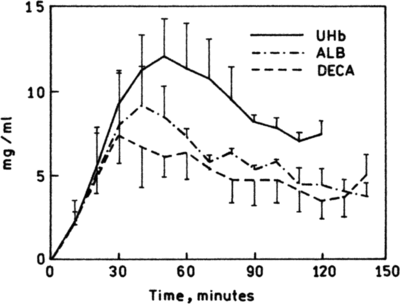
Figure 3 Exchange transfusion of ZL-HbBv produced no change in mean arterial pressure (±SD) over a 4-h observation period in anesthetized cats (A) or over a 48-h observation period in unanesthetized cats (B). (Adapted from Matheson et al., 2002).
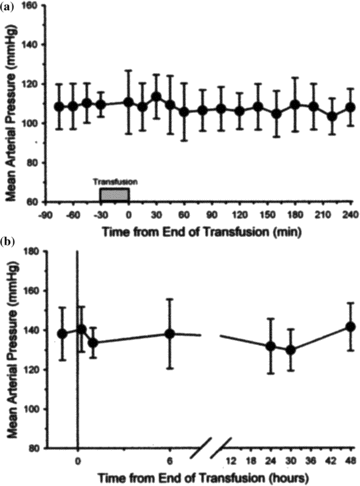
Figure 4 (A). Percent change (±SE) in pial arteriolar diameter measured through a closed cranial window in anesthetized cats after a 40% exchange-transfusion with 5% albumin or 6% ZL-HbBv. The constriction observed with ZL-HbBv at reduced hematocrit and blood viscosity was reversed to dilation in a group in which plasma viscosity was simultaneously increased by co-infusion of 20% polyvinylpyrrolidone (PVP). *P < .05 from time control group. (B). The constrictor response to ZL-HbBv exchange-transfusion in anesthetized rats was blocked by superfusing the cranial window with the cytochrome P450 w-hydroxylase inhibitor N-methylsulfonyl-12,12-dibromododec-11-enamide (DDMS; 50 µM). This indicates that the vasoconstriction in panel A was not NO dependent. (Adapted from Rebel et al., 2003).
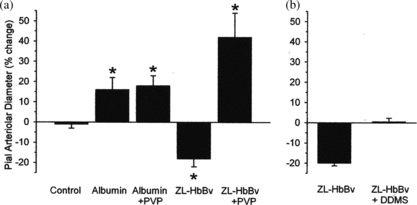
Figure 5 Transport of glucose and amino acids through a rabbit jejunal membrane voltage clamped in a Ussing chamber. The Ringer's perfusate was equilibrated with 30% O2, 5% CO2 and contained either 3 g/dl DECA or an equivalent suspension of bovine red cells. After 4 h of perfusion, red cells failed to support transport. (Adapted from Bucci et al., 2003).
